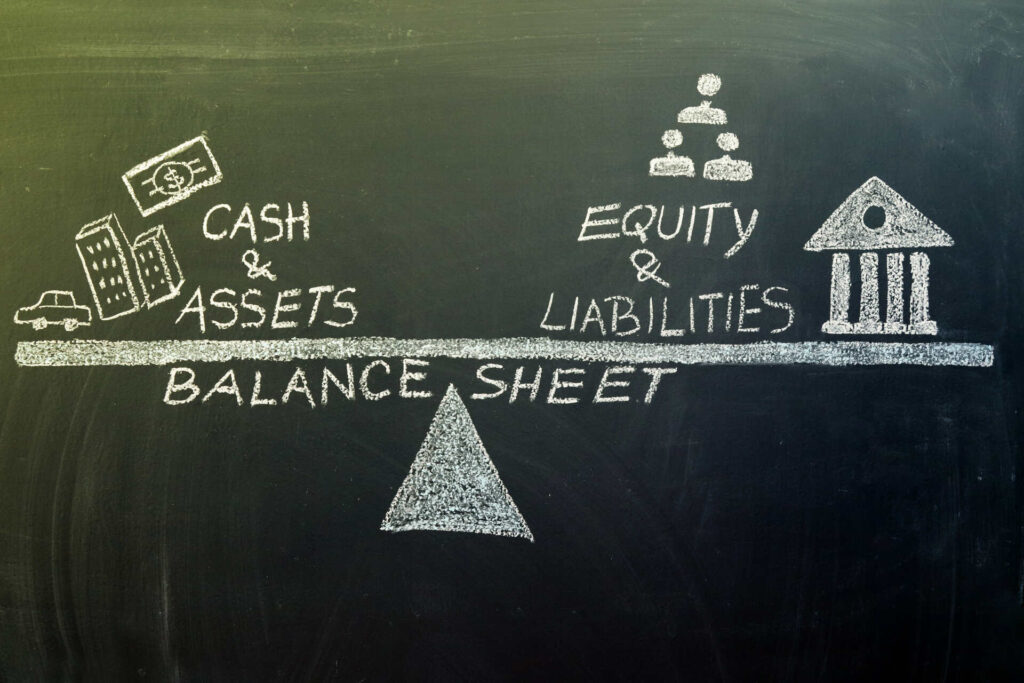Liabilities
Written by Team 365 finance

Liabilities are a company’s obligations to other parties. They can range from debts that need to be repaid over time to income taxes, customer deposits and accounts payable that need to be paid to suppliers and other contractors.
Companies list liabilities on their balance sheet after listing their assets. When the total value of a company’s liabilities is greater than the total value of its assets, the company is considered to be financially insolvent.
Understanding how liabilities work is an important aspect of starting, developing and growing a business. Below, we’ve explained how liabilities work in more detail, as well as several common liabilities you’ll likely run into as a business owner or investor.
What are Liabilities?
A liability is an obligation a business has to another party. For example, if a business takes out a loan for £10,000 and agrees to pay it back over the course of five years, the amount owed to the bank becomes one of the business’s liabilities.
Liabilities can also be for products sold to or services performed for a business. For example, if a business hires a designer to build their website at a cost of £2,000 and agrees to pay after the work is performed, the £2,000 fee is a financial liability.
Companies report liabilities after assets as part of their balance sheet. By looking at assets and liabilities, an analyst or investor can get a picture of the company’s overall financial state at that specific point in time.
Liabilities are part of the fundamental accounting equation: Assets = Liabilities + Shareholder Equity
Just like assets, liabilities can be current or noncurrent. Current liabilities are liabilities that need to be paid to the company’s creditors within one year. Examples of current assets include credit card debts, accounts payable and other accrued liabilities.
These are also known as “short-term” liabilities, since they need to be paid by the business over the short term.
Noncurrent liabilities, on the other hand, are obligations that don’t need to be settled within the next year. Examples of noncurrent liabilities include long-term loans, payments for equipment and vehicles, long-term leases and projected benefit obligations for pension liabilities.
Warranties can also be viewed as noncurrent liabilities, as they potentially need to be paid in the distant future if a product or service is defective. Since these liabilities don’t need to be paid in the immediate term, they’re also often referred to as “long-term” liabilities.
It’s also possible for a business to have contingent liabilities. These are potential liabilities that may or may not need to be paid, depending on a future outcome. For example, if a business is sued, the potential damages or settlement are often calculated as a contingent liability.
Why Liabilities Matter
It’s inevitable that a business will take on liabilities as it grows. Since liabilities are often loans and other forms of financing, it’s very common for businesses that are growing rapidly to have significant liabilities.
It’s important to remember that although liabilities are costs that a business will need to pay at some point, they aren’t a bad thing. If a company can comfortably pay its liabilities, it’s in good financial shape and could potentially be a good investment.
However, liabilities can become a problem when they grow at a significantly faster rate than a business’s assets.
For example, if a business only has a small amount of cash available, but has large liabilities in the form of short-term loan repayments, the liabilities can put a severe strain on the business’s finances, making it difficult for it to earn a profit.
When liabilities grow too large, a business can become insolvent. There are two ways liabilities can cause a business to enter this state:
- Cash flow insolvency. This is when a business has enough assets to pay its liabilities, but doesn’t have enough cash to pay them when they’re due.
- Balance sheet insolvency. This is when the total value of a business’s assets are not enough to pay its liabilities.
Becoming insolvent as a result of excessive liabilities doesn’t always mean that a business is bankrupt. Often, businesses are able to negotiate with their creditors to manage their current liabilities and continue trading.
Summary
From payments to suppliers to loan installments, liabilities are a normal, routine part of running a business. However, when they grow too large in comparison to a company’s assets, liabilities can create a treat to a business’s solvency.
By planning your business’s finances carefully and avoiding reckless spending, you can stay on top of your liabilities and run an effective, profitable business.